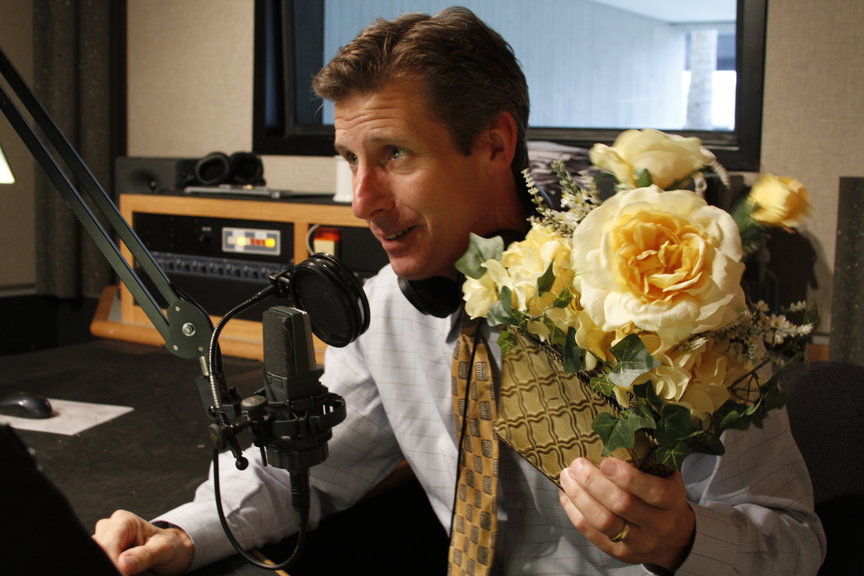A Rose By Any Other Distance (Ep. 73)
[omny:https://traffic.omny.fm/d/clips/aaea4e69-af51-495e-afc9-a9760146922b/14a43378-edb2-49be-8511-ab0d000a7030/47015353-ac5f-4b39-9282-ab0d001ba74f/audio.mp3]

We sent Kai Ryssdal an arrangement of plastic flowers to make our point. Weirdly, the arrangement’s container matched his necktie.
Our latest Freakonomics Radio on Marketplace podcast is called “A Rose By Any Other Distance.” (You can download/subscribe at iTunes, get the RSS feed, listen via the media player above, or read the transcript here.)
With Mother’s Day coming up, we thought it’d be interesting to look at the cut-flower industry. Americans spend about $12 billion a year on them. Mario Valle, a wholesaler at the L.A. Flower District, tells us that Mother’s Day is easily his biggest day of the year: “It’s 30 percent of my year. Everyone has a mother!”
So where do all those flowers come from? It turns out that about 80 percent of all cut flowers sold in the U.S. are imported. The leading producers are Colombia, Ecuador, and Costa Rica, places where the sun shines roughly 12 hours a day, year-round. The flowers must be refrigerated immediately after they’re cut; most are flown to the Miami International Airport, which handles about 187,000 tons of flowers a year, and then trucked to their destination.
We live in a day and age where people are obsessed with “food miles” and the carbon footprint of everything they consume. So where is the outrage over these globe-trotting Mother’s Day flowers? If we ship food halfway across the planet, at least we eat it; it’s our sustenance. But flowers just get looked at, and then tossed. They seem to have somehow escaped the environmental scrutiny that accompanies what we eat, how we transport ourselves, etc. Perhaps it’s the halo effect from the flowers themselves? They’re so pretty, after all.
You’ll hear all about this in the podcast, including a comparison of cut flowers and Christmas trees (another big, non-edible crop). You’ll also hear from Dartmouth geographer Susanne Freidberg, who has appeared on this blog before and is currently studying global trade and how firms try to calculate carbon footprints. In terms of cut flowers, she thinks that plastic might be a better alternative:
“They’re so lightweight, they wouldn’t need to be flown anywhere. They wouldn’t decompose and produce greenhouse gases in any landfill. There’s probably no slave labor because the production of the plastic flowers is probably all mechanized. And there’s the endless lifespan — so there are possibilities for regifting them.”
We also spoke with Will Masters, the agricultural economist who once wrote a poem about the price of kiwi fruits. We unfortunately didn’t have room in the podcast for the sharp and entertaining Masters, but in an interview he made the point that a) a carbon tax would help the price of goods reflect their true cost; and b) even with a carbon tax, it may be that, given the way agriculture works, it may still be more efficient to ship in flowers from far away (just as we ship in food from far away), even from a greenhouse-gas perspective:
“The cost of that carbon emission would be built into the farmer’s decision in Guatemala or Colombia to grow the roses the way they were growing them. The air freight company’s decision of what kind of airplane to put them in. The airport’s decision on the receiving end about what kind of warehouse — how well insulated it would be — and so on and so forth. All of that would build in the price. And therefore, when you went to the florist and you had a $6.99 bouquet that was imported versus a $7.99 bouquet that was locally-grown, you would be seeing in that price, reflected the full cost of all the inputs. Then you trust prices again. Prices mean what they say and that’s the market that we really need.”

Comments